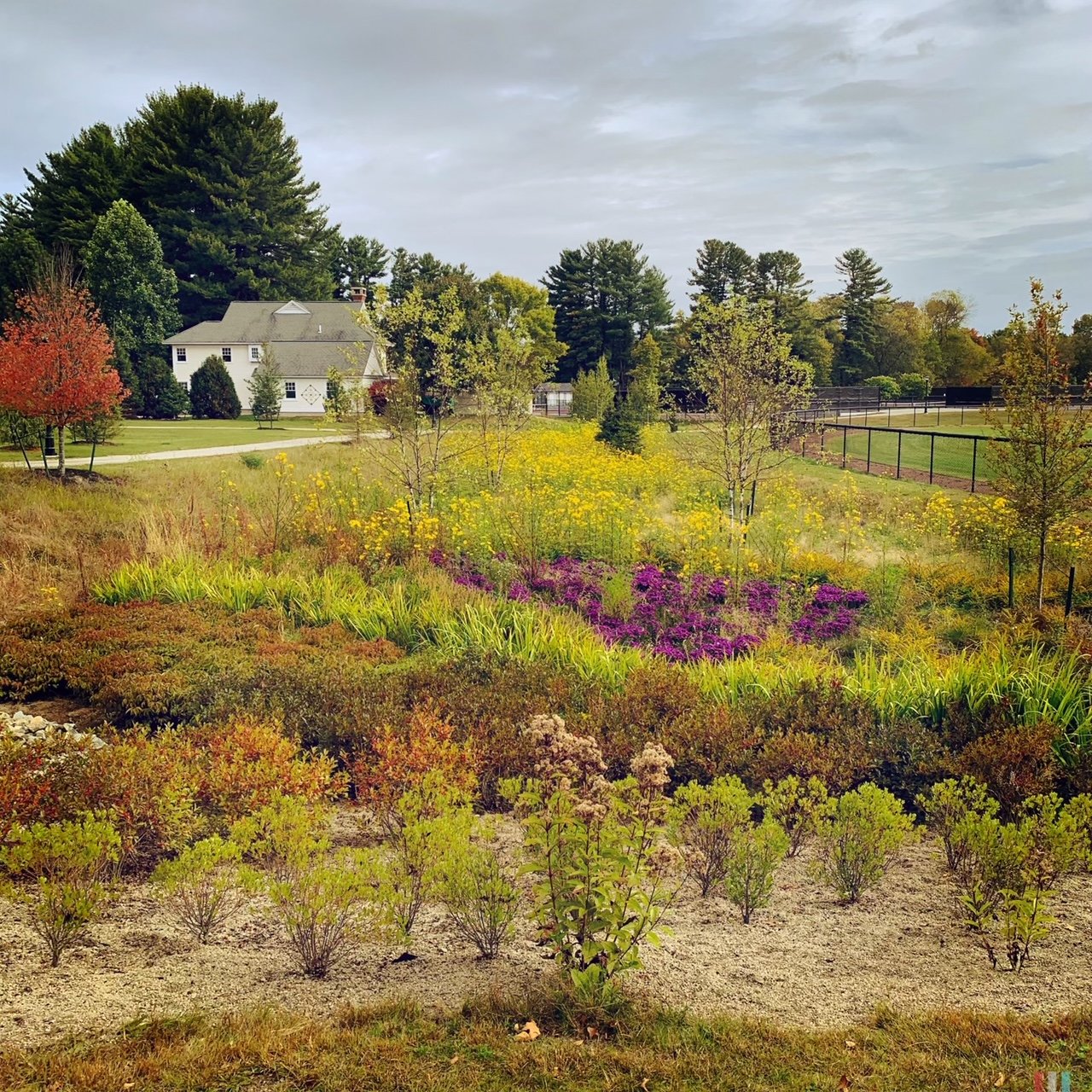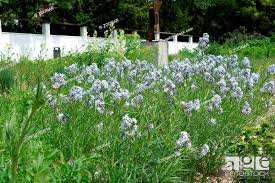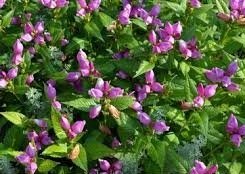Rain Gardens: What Role Do They Play In The Landscape?
As professional landscapers, we aim to be good stewards of the land. Landscaping for water quality is a part of those efforts. We all benefit from clean water, and we all suffer when our drinking supply is tainted. Storm water runoff contributes to 90% of the pollution in New Hampshire. The water can carry sediment, excess nutrients, pathogens, and toxic contaminants. There are many practices that help to prevent harmful runoff from streaming into our waterways. You may have read about one of them already in November’s blog about permeable paving systems. Some of those solutions can be a riparian buffer, dripline, driveway with a permeable surface, dry well, infiltration steps, rain barrels, vegetated swales, water bars, and rain gardens.
What Qualifies A Proper Rain Garden
Rain gardens are becoming increasingly popular as people become more aware of better environmental landscape practices. So, what is a rain garden? A rain garden, defined by the University of New Hampshire Cooperative Extension, is a shallow infiltration basin planted with water-tolerant plant species, designed to capture concentrated runoff. Rain gardens are not designed to be a final destination. They act as way stations, capturing surface water for just a few hours at a time before allowing the runoff to be infiltrated into the ground or absorbed and transpired by plants.
know your soils
The speed of infiltration depends on the structure and type of soil. You’ll want to conduct a couple of tests to get an idea of what your soil brings to the table and if any modifications may be needed to adjust the physical structure of the soil for adequate drainage and/or to balance out the level of minerals and nutrients in the soil.
Soil Percolation Test. A percolation test needs to be taken to ensure your garden is going to drain at the proper rate. This is done by digging a hole 12” deep, filling it with water, and then coming back 24 hours later to see if it drained all the way. Soil type will affect how quickly the water percolated through the soil. Don’t panic if your water sticks around, there are methods that can be used to amend the soil. We’ve included some resources in the next section that delve deeper into the subject.
Soil pH Test. A soil test should be done to determine pH to see if any amendments need to be added to create a healthy environment for the plants to establish.
The Building Process
Every rain garden is going to be different. The proper size of a rain garden depends on the area of the impermeable surfaces that produce the runoff, the slope of the ground, and the soil type. There will be some math involved but, thanks to technology, there are online tools available for anyone to use. Two sources are the Rain Garden Alliance and the Vermont Rain Garden Manual. The ponding depth, size factor, rain garden area, and total depth to dig are all calculated to come up with the size for the rain garden to capture 1” of rain without overflowing.
The shape will be determined by what the landscape requires. An inlet and outlet will need to be incorporated to guide the water into the garden, and plants need to be selected that can handle periodic flooding. The garden will have washed stone in the base to prevent erosion, then a mix of native soil, compost, and amendments are added. Plants must be installed at the appropriate soil level, then two inches of mulch should be applied to help retain moisture and keep weeds at bay.
Some plants that would be suitable for a rain garden in full- or partial-sun are Joe Pye weed, Columbine, Cardinal Flower, Black-eyed Susan, Swamp Milkweed, Sedges, Bluestar, Turtlehead, and New England Aster. These plants also add to plant biodiversity and most attract beneficial pollinators!
Safety First: Know What’s Below
Keep in mind that if machinery is involved for excavation, Dig Safe needs to be called, it’s the law!
Dig Safe is a free service that coordinates the inspection of your project area and identifies important utilities underground that may be dangerous or disruptive if damaged. It’s easy to do, all you have to do is dial 811 on the phone. If you are not within Dig Safe’s service area (New Hampshire, Maine, Vermont, Massachusets, and Rhode Island), you will need to look up the services provided in your area.
Wow, That’s A Lot Of Work!
There is a lot that goes into the planning and installation of a rain garden, we understand that tackling a project like this can be overwhelming. If you’d like a hand in building your new rain garden, we can take the guesswork out of the project for you!
Next month’s blog is all about winter pruning, we’ll catch up with you in February!
This article was written by Leigh Lessard, Director of Landscape Maintenance with editing, research, and publishing help from Daisy Chinburg, Landscape Designer.
Questions?
Give us a call* at (207) 438-9995 or visit our contact us page here on our website and ask for us to get in touch with you. Don’t forget to mention reading this blog!
*If you are a current customer we ask that you please contact your regular project manager as our office staff is currently loaded with work and may not be able to get back to you as quickly as we’d all like. Thanks in advance!









